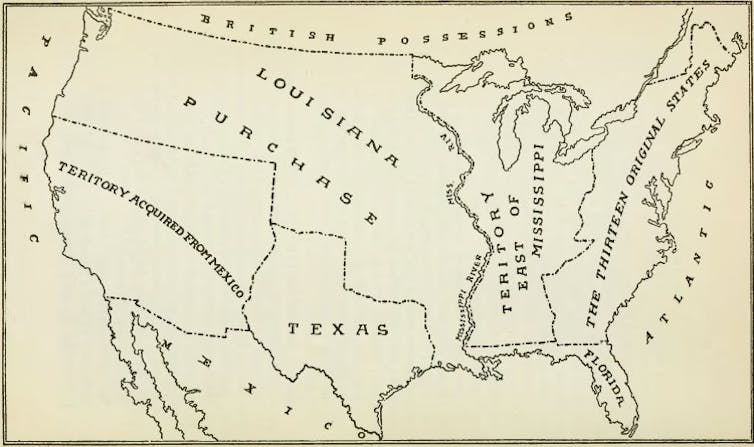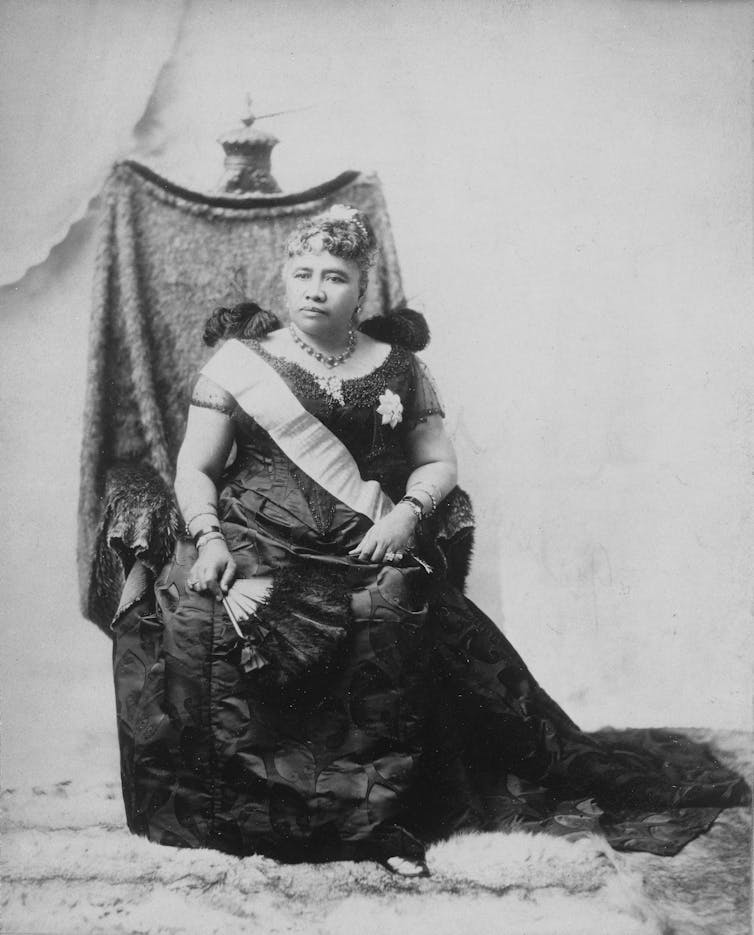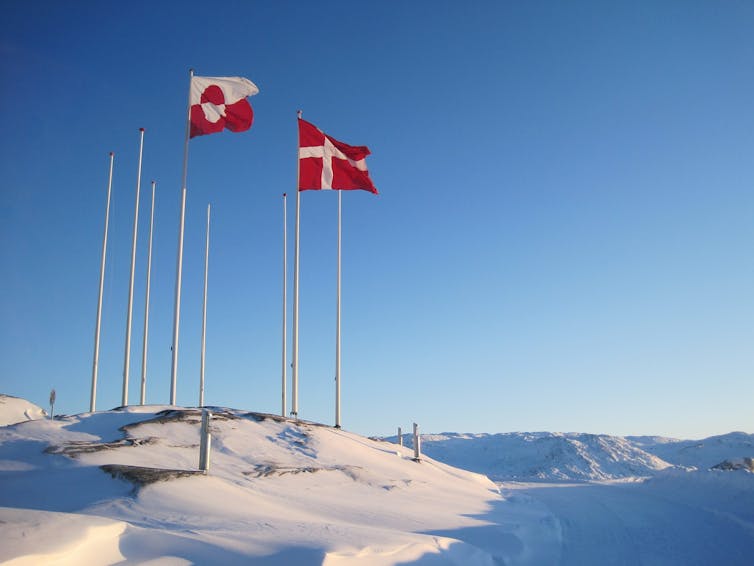some essential reading for Trump on colonialism
- Written by Felicity Jensz, Research associate professor, University of Münster
Donald Trump is not the first US President to make an offer of buying Greenland from Denmark – but he might be the last.
Home of some 56,000 people and around 80% covered by ice, Greenland is culturally connected to Europe – but physiographically it is a part of the continent of North America.
The USA has purchased from the icy northern territories before. In 1867, they bought Alaska for US$7.2 million from Russia, who established settlements there in the late eighteenth century.
Then (as now) no local Indigenous people were consulted in the transaction.
A long history of American colonialism
The history of settler colonialism in North America includes numerous land purchases, including with Indigenous peoples, such as the 1737 Walking Purchase which tricked the Delaware Indians out of more than double the amount of land than they expected, purchased only for “goods”.
America has successfully purchased land from other European countries, including over two million square kilometres of North America from France in 1803 in the Louisiana Purchase for US$15 million.
 This map from 1903 shows the extent of the Louisiana Purchase.
Wikimedia Commons
This map from 1903 shows the extent of the Louisiana Purchase.
Wikimedia Commons
The United States has also purchased Danish colonies before. In 1917, Denmark sold the Danish West Indies (US$25 million) to the United States, which the Americans promptly renamed the United States Virgin Islands. This isn’t even the first time a US president has tried to buy Greenland – President Harry Truman offered to buy it from Denmark in 1946 for $US100 million.
America has also gained territory by force of arms, such as when Spain ceded the Philippines to the USA after the Spanish-American War with the signing of the Treaty of Paris in December 1898. And they have opportunistically annexed territories after they suffered internal political turmoil, such as in the case of the annexation of the Kingdom of Hawaii in 1893 in the years after Queen Liliʻuokalani was overthrown.
 Queen Liliʻuokalani, the last monarch of the Kingdom of Hawaii, photographed around 1891.
Wikimedia Commons
Queen Liliʻuokalani, the last monarch of the Kingdom of Hawaii, photographed around 1891.
Wikimedia Commons
A Dano-Norwegian colony
Trump believes he can simply purchase Greenland from Denmark. Put bluntly, this is impossible, although the mistake is perhaps an easy one to make for someone with a colonial era mindset and only a passing familiarity with the region.
For the last two centuries, Greenland has predominately been a Danish colony, and, as the example of Alaska demonstrates, colonies were often sold and exchanged by imperial powers. Truman’s offer in 1946 was when Greenland was a Danish colony.
Leaving aside its Viking past, the colonial period for Greenland began in 1721, when the Danish-Norwegian missionary Hans Egede established a mission and began trading near present-day Nuuk, placing Greenland under joint control of the Dano-Norwegian monarchy. At the end of the Napoleonic Wars in 1815, Greenland became a sole colony under Denmark.
It remained a Danish colony until 1953, after a referendum sparked by Danish discomfort with the United Nations’ oversight of the relationship between Denmark and Greenlanders. Greenland was formally incorporated into the Danish Realm as an autonomous territory without consultation with Greenlanders.
The reality was that Greenland was still a colony in all but name.
Striving for recognition
Greenlanders continued striving for political recognition and autonomy from their former colonisers. The Greenland Home Rule Act in 1979 in was a step towards this autonomy, establishing Greenland’s own parliament and further sovereignty.
In 2008, the country hosted a referendum to support or oppose the Greenland Self-Government Act. Passing with 75% of the vote, it declared Greenlanders are a distinct people within the Danish Realm.
Politically, this placed the Greenlandic parliament on an equal basis with the Danish parliament – although this relationship is not always an easy one. Some aspects of Greenland’s politics are still under Danish control, such as foreign policy, security and international agreements.
 The Greenlandic and Danish flags flying together.
Pixabay, CC BY
The Greenlandic and Danish flags flying together.
Pixabay, CC BY
But under the current laws, Greenlanders have the right to self-determination, and any agreement to purchase Greenland – no matter who made it – would have to be agreed upon by Greenlanders.
‘Greenland is Greenlandic’
Denmark’s prime minister, Mette Frederiksen, has dismissed Trump’s claims that Denmark essentially owns Greenland, stating that “Greenland is Greenlandic.”
Unlike in the Alaskan purchase of the nineteenth century, the agreement of Greenlanders would be essential for any “large real estate deal” that stripped them of their land and sovereignty.
Kim Kilesen, the Prime Minister of Greenland, has empirically stated that Greenland is not for sale. And if it was, he would be the one to ask – not Denmark.
Greenland is not Denmark’s to sell.
Authors: Felicity Jensz, Research associate professor, University of Münster





